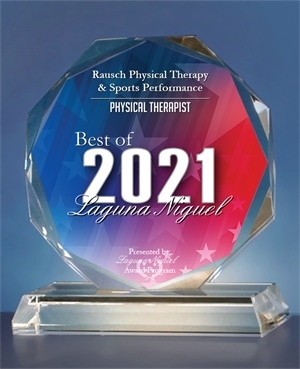Seven Myths About Physical Therapy: Debunked
February 18, 2016 7:56 pm / Category: Physical Therapy

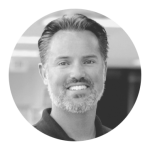
BY KEVIN RAUSCH, PT, PRESIDENT OF RAUSCH PHYSICAL THERAPY
If you haven’t been ordered to see a physical therapist by an MD, chances are you don’t know much about this particular field of health care. You probably only think of us when you’re fresh off an injury or in a hospital after surgery. You might think physical therapists, massage therapists, personal trainers and athletic trainers are all the same thing. Well, guess what? YOU ARE WRONG. Don’t feel bad! There are many, many people who are in the same misguided boat as you.
There are many types of physical therapy: neurological, in-hospital, pediatrics, and orthopedic, just to name a few. With so much variety and a lot of long-held misconceptions, most folks simply don’t know what a physical therapist does or realize how s/he can help them. So here are the top seven myths you hear about physical therapy: debunked.
Myth 1: Physical therapists are just personal trainers who do massages.
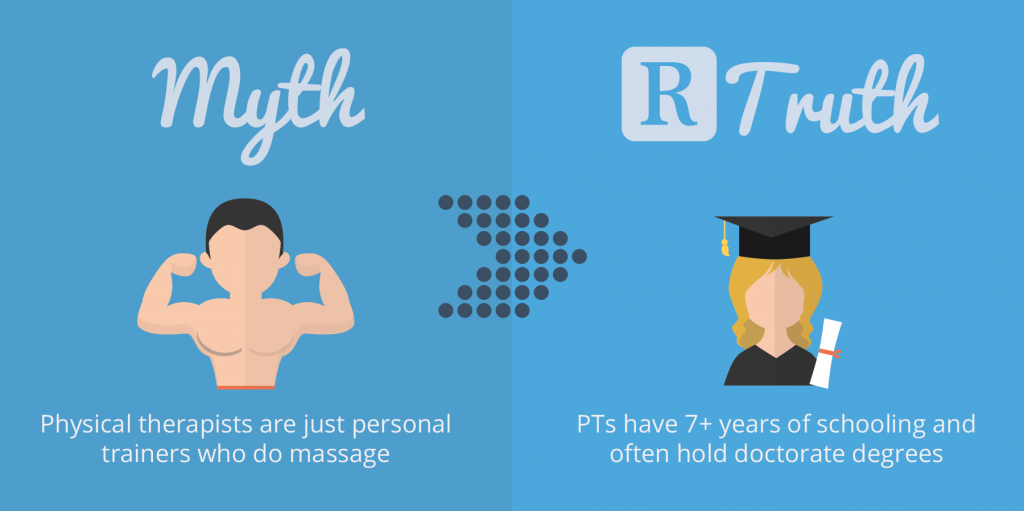 It takes a lot more than a weekend certification course to become a licensed physical therapist. Your physical therapist has had at least seven years of schooling (four years of undergrad and three years of “PT school.”) Some physical therapists—like the majority of our staff—actually have a doctorate degree. After nearly a decade of schooling, physical therapists then have to pass national and state licensing exams. So trust me when I say it takes a lot of time, money and perseverance before a physical therapist is allowed to get his/her hands on you!
It takes a lot more than a weekend certification course to become a licensed physical therapist. Your physical therapist has had at least seven years of schooling (four years of undergrad and three years of “PT school.”) Some physical therapists—like the majority of our staff—actually have a doctorate degree. After nearly a decade of schooling, physical therapists then have to pass national and state licensing exams. So trust me when I say it takes a lot of time, money and perseverance before a physical therapist is allowed to get his/her hands on you!
Myth 2: You need a doctor’s prescription to come to physical therapy.
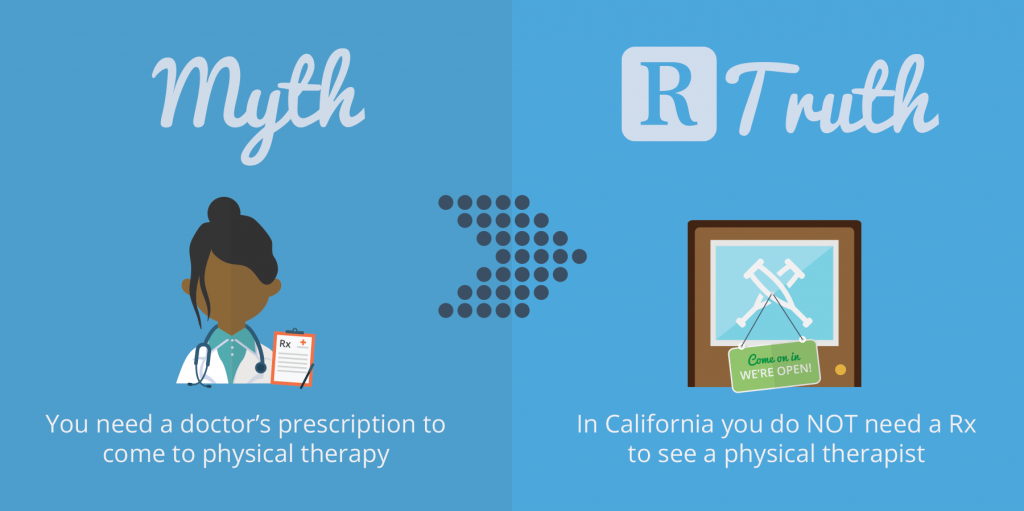 In the past you needed a doctor’s prescription before you could go to a physical therapy clinic for treatment. However, two years ago California enacted a law that allows full “Direct Access to Physical Therapy.” This means Californians can now go directly into a physical therapy clinic at any time for any aches, pains, sprains, etc. without having to get permission from their doctor first. Of course, there are some injuries that do require a doctor’s exam and treatment (and sometimes even surgery,) which is why we work closely with the absolute best physicians in our area.
In the past you needed a doctor’s prescription before you could go to a physical therapy clinic for treatment. However, two years ago California enacted a law that allows full “Direct Access to Physical Therapy.” This means Californians can now go directly into a physical therapy clinic at any time for any aches, pains, sprains, etc. without having to get permission from their doctor first. Of course, there are some injuries that do require a doctor’s exam and treatment (and sometimes even surgery,) which is why we work closely with the absolute best physicians in our area.
Myth 3: You can only get treated at the physical therapy clinic your doctor recommends
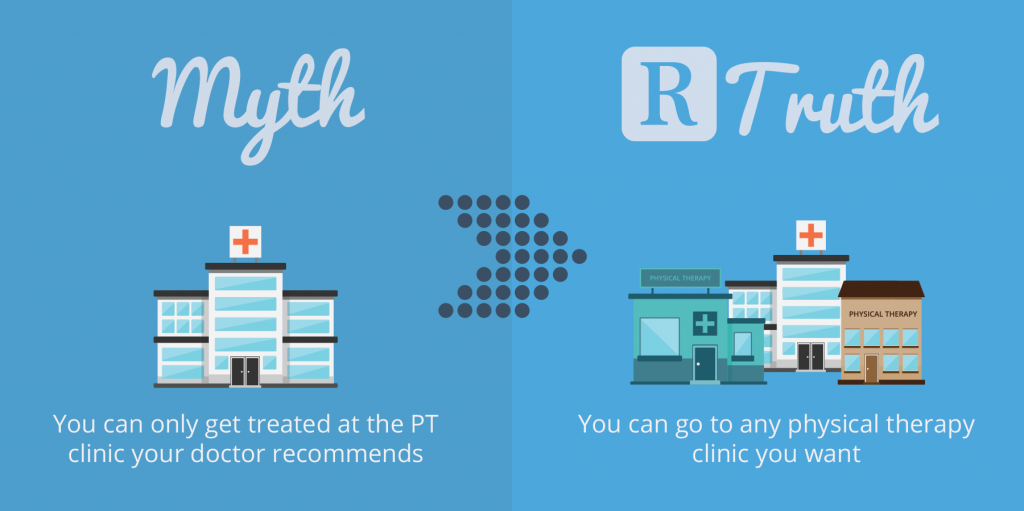 While your doctor may recommend you go to a specific physical therapy clinic, you do not have to go there. You can request to go to any physical therapy clinic you want. Do your research and find the clinic that’s right for you, matches your lifestyle, and will be the best fit for your goals.
While your doctor may recommend you go to a specific physical therapy clinic, you do not have to go there. You can request to go to any physical therapy clinic you want. Do your research and find the clinic that’s right for you, matches your lifestyle, and will be the best fit for your goals.
Myth 4: Physical therapy is only for post-surgery patients and old people.
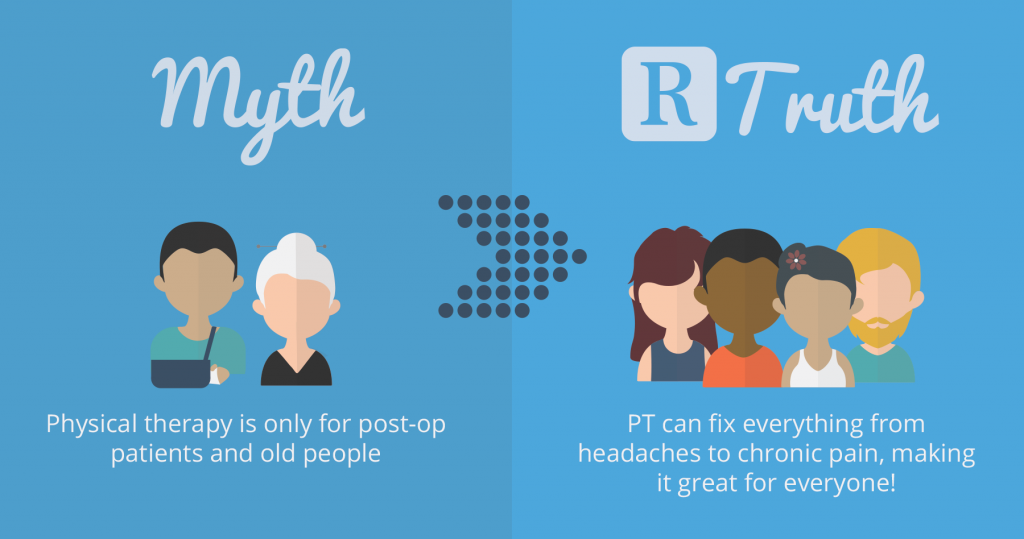 Did you know physical therapy can fix stuff like migraines, chronic back pain, and old injuries? Most people simply don’t realize that physical therapists are able to alleviate things like chronic headaches. Physical therapists work on backs, knees, necks, ankles, elbows, shoulders… basically if it moves, we can fix it. If it’s stiff, weak or painful, you should already be in here.
Did you know physical therapy can fix stuff like migraines, chronic back pain, and old injuries? Most people simply don’t realize that physical therapists are able to alleviate things like chronic headaches. Physical therapists work on backs, knees, necks, ankles, elbows, shoulders… basically if it moves, we can fix it. If it’s stiff, weak or painful, you should already be in here.
“Pre-hab” is also a thing! In fact, most elite athletes work with a physical therapist on a weekly basis to prevent potentially-sidelining injuries. And no, we don’t order you to stop everything you’re doing, in fact we like you exercising! Your physical therapist can review your current regime and offer some suggestions for modifications to help keep you active.
Myth 5: Physical therapy is just a bunch of stretching.
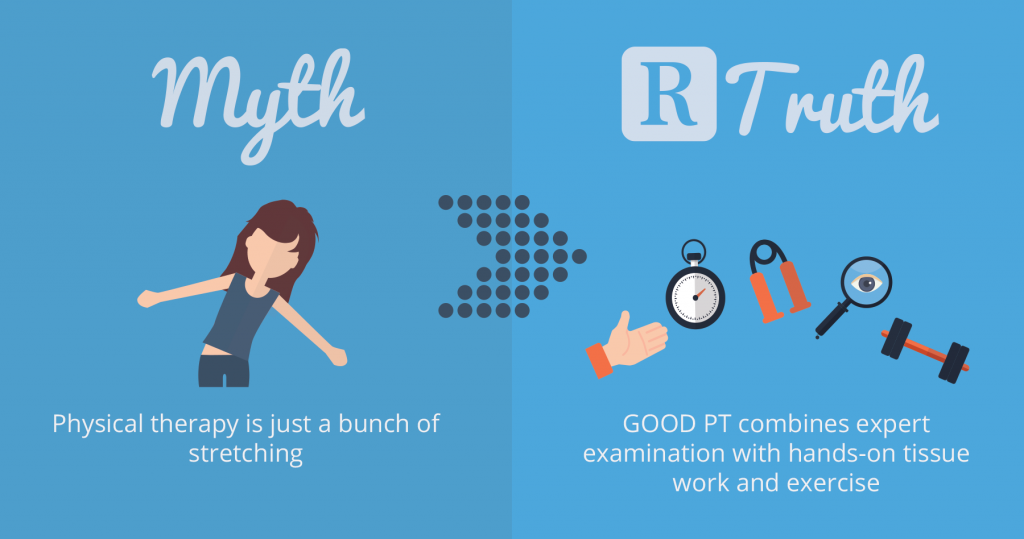 If this is what you know as physical therapy, then you should go somewhere else. Physical therapy treatment should consist of a great exam, some soft tissue work, joint mobilization, biomechanical corrections, and activity or sport-specific exercise. Basically, your physical therapist should have his/her hands on you during every appointment and should come up with a goal-specific treatment plan to get you back to doing what you love.
If this is what you know as physical therapy, then you should go somewhere else. Physical therapy treatment should consist of a great exam, some soft tissue work, joint mobilization, biomechanical corrections, and activity or sport-specific exercise. Basically, your physical therapist should have his/her hands on you during every appointment and should come up with a goal-specific treatment plan to get you back to doing what you love.
Myth 6: Physical therapy hurts.
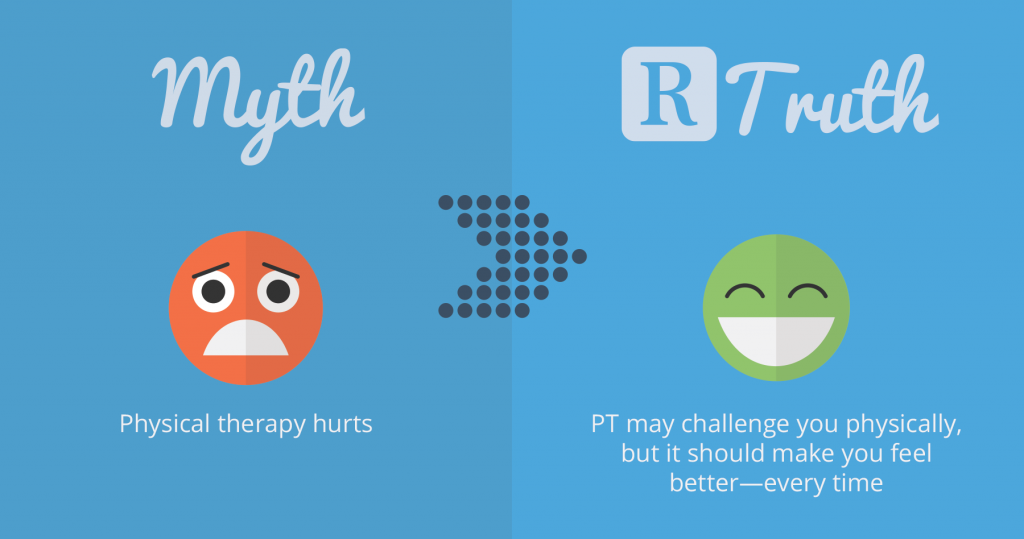 Many people are scared to see a physical therapist because they think we’re mean drill sergeants who want to torture you back to health. The truth is that the old saying “No Pain, No Gain” has no place in a physical therapy clinic! PT does not stand for “pain and torture” (Unless you forget to pay your copay.) Physical therapy is not supposed to hurt! It does often challenge you physically, but it should make you feel better, every time.
Many people are scared to see a physical therapist because they think we’re mean drill sergeants who want to torture you back to health. The truth is that the old saying “No Pain, No Gain” has no place in a physical therapy clinic! PT does not stand for “pain and torture” (Unless you forget to pay your copay.) Physical therapy is not supposed to hurt! It does often challenge you physically, but it should make you feel better, every time.
Myth 7: Chronic pain is something you have to live with.
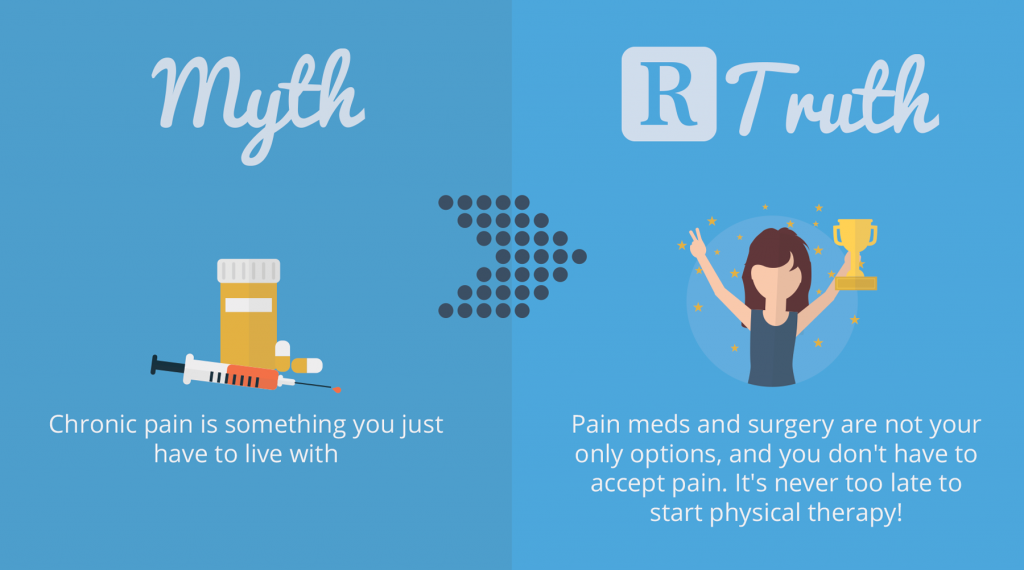 So many people have a defeatist attitude when it comes to their bodies; they think that if their pain has been around for so long, their only option is to have surgery or just live with it. I see it often in ex-collegiate athletes who think because they’re not competing anymore, there’s no point in addressing their chronic pain/injuries; they “accept” they’ve “ruined” their bodies and settle for day-to-day pain and limited activity. I love it when I get a patient who tells me they had to give up playing their favorite sport years ago because of chronic pain, and then after a few months of physical therapy they’re back to doing what they love.
So many people have a defeatist attitude when it comes to their bodies; they think that if their pain has been around for so long, their only option is to have surgery or just live with it. I see it often in ex-collegiate athletes who think because they’re not competing anymore, there’s no point in addressing their chronic pain/injuries; they “accept” they’ve “ruined” their bodies and settle for day-to-day pain and limited activity. I love it when I get a patient who tells me they had to give up playing their favorite sport years ago because of chronic pain, and then after a few months of physical therapy they’re back to doing what they love.
Remember, pain medication and surgery are not your only options, and you don’t have to suffer! It’s never too late to start physical therapy. In fact, fixing the tough, been-there-forever stuff is our favorite challenge at Rausch Physical Therapy.
[Click to view or download the PT Myth Infographic]
So, now that we’ve demystified physical therapy, take control of your wellness, pick up your phone and make an appointment to take care of YOU. Oh, and don’t forget to do your home exercise program!
All the best to your health,
 As the president and founder of Rausch Physical Therapy & Sports Performance, Kevin Rausch, PT, MPT takes great pride in the care of every single patient he treats. Kevin specializes in sacroiliac joint dysfunctions, running and cycling injuries, and return-to-sport planning for athletes. Since the first day he opened his clinic in 2006, Kevin has strived to provide the best in care, service and technology so as to strengthen his patients’ total body health and get them back to doing what they love.
As the president and founder of Rausch Physical Therapy & Sports Performance, Kevin Rausch, PT, MPT takes great pride in the care of every single patient he treats. Kevin specializes in sacroiliac joint dysfunctions, running and cycling injuries, and return-to-sport planning for athletes. Since the first day he opened his clinic in 2006, Kevin has strived to provide the best in care, service and technology so as to strengthen his patients’ total body health and get them back to doing what they love.



